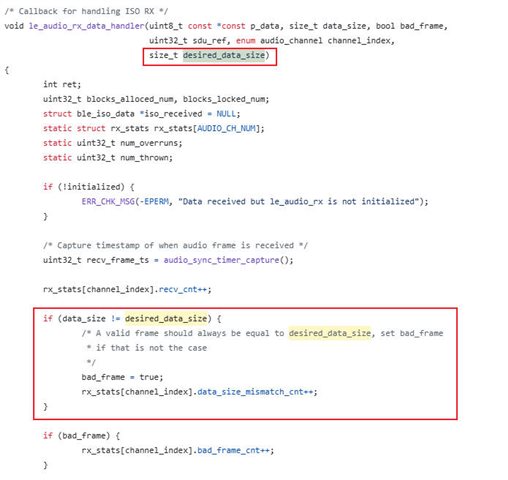I want to know where did the "desired_data_size" value in le_audio_rx_data_handler come from?
And why "data_size != desired_data_size" means the pkt is bad frame?

Thank you for your reply.
I want to know where did the "desired_data_size" value in le_audio_rx_data_handler come from?
And why "data_size != desired_data_size" means the pkt is bad frame?

Thank you for your reply.
Hi,
There could be a chance the sender didn't prepare the sampling data well or not sent it in time so there's no payload, or something wrong cause the length is not correct. Once that happens, we should tag that packet as a bad frame and tell the LC3 decoder to use PLC (packet loss concealment) to mimic a frame to ease the bad effect of missing audio frames.
-Amanda H.
Thank you for your reply,
I also want to know how the value "desired_data_size" defined, when creating CIS stream connection?
Thank you for your reply,
I also want to know how the value "desired_data_size" defined, when creating CIS stream connection?
Before establishing the ISO stream, the unicast client will read the codec support capability information from the unicast server, and then set it to the specific configuration. After that, the unicast server already knows which kind of configuration (sampling rate, bitrate ...) it configured by the unicast server, and then knows the expected received data size.
Got it.
Thank you for your reply.